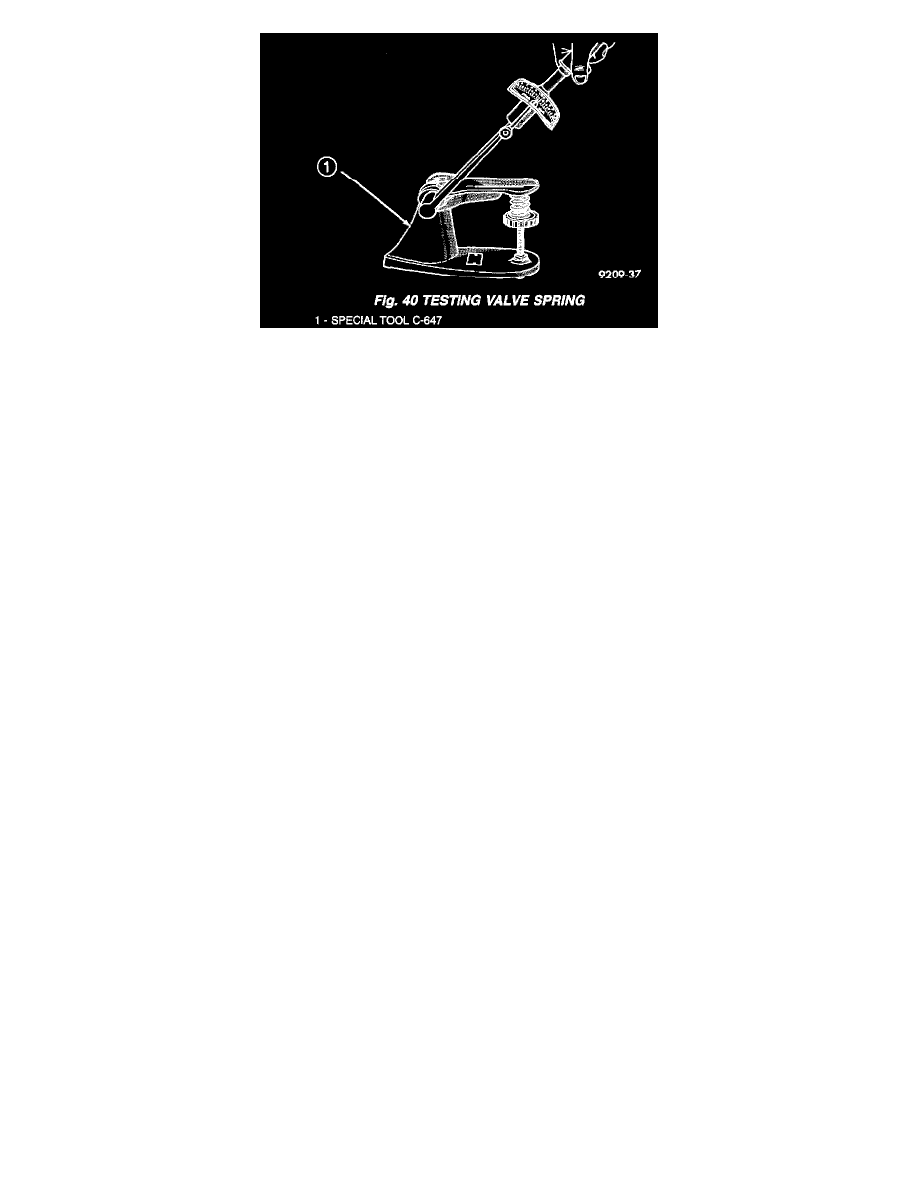Stratus Sedan V6-2.7L (2001)

Whenever valves have been removed for inspection, reconditioning or replacement, valve springs should be tested (Fig. 40). As an example; the
compression length of a spring to be tested is 38.00 mm (1.496 inch). Turn the table of Tool C-647 until surface is in line with the 38.00 mm (1.496
inch) mark on the threaded stud and the zero mark on the front. Place spring over stud on the table and lift compressing lever to set tone device. Pull
on torque wrench until ping is heard. Take reading on torque wrench at this instant. Multiply this reading by two. This will give the spring load at test
length. Fractional measurements are indicated on the table for finer adjustments. Refer to Specifications to obtain specified height and allowable
tensions. Replace any springs that do not meet specifications.
INSTALLATION
IN VEHICLE
1. The valve stem seal/valve spring seat should be pushed firmly and squarely over the valve guide using the valve stem as guide. Do Not Force seal
against top of guide. When installing the valve retainer locks, compress the spring only enough to install locks.
2. Follow the same procedure on the remaining cylinders using the firing sequence 1-2-3-4-5-6. Make sure piston is at TDC on the cylinder that the
valve spring is to be removed.
3. Remove spark plug adapter tool and Special Tool MD 998772A.
4. Install rocker arm(s).
5. Install camshafts, timing chain, and timing chain cover.
6. Install cylinder head covers.
7. Install upper intake manifold.
8. Install air cleaner housing and inlet hose.
9. Connect negative cable.
OFF VEHICLE
1. If removed, install valve(s).
